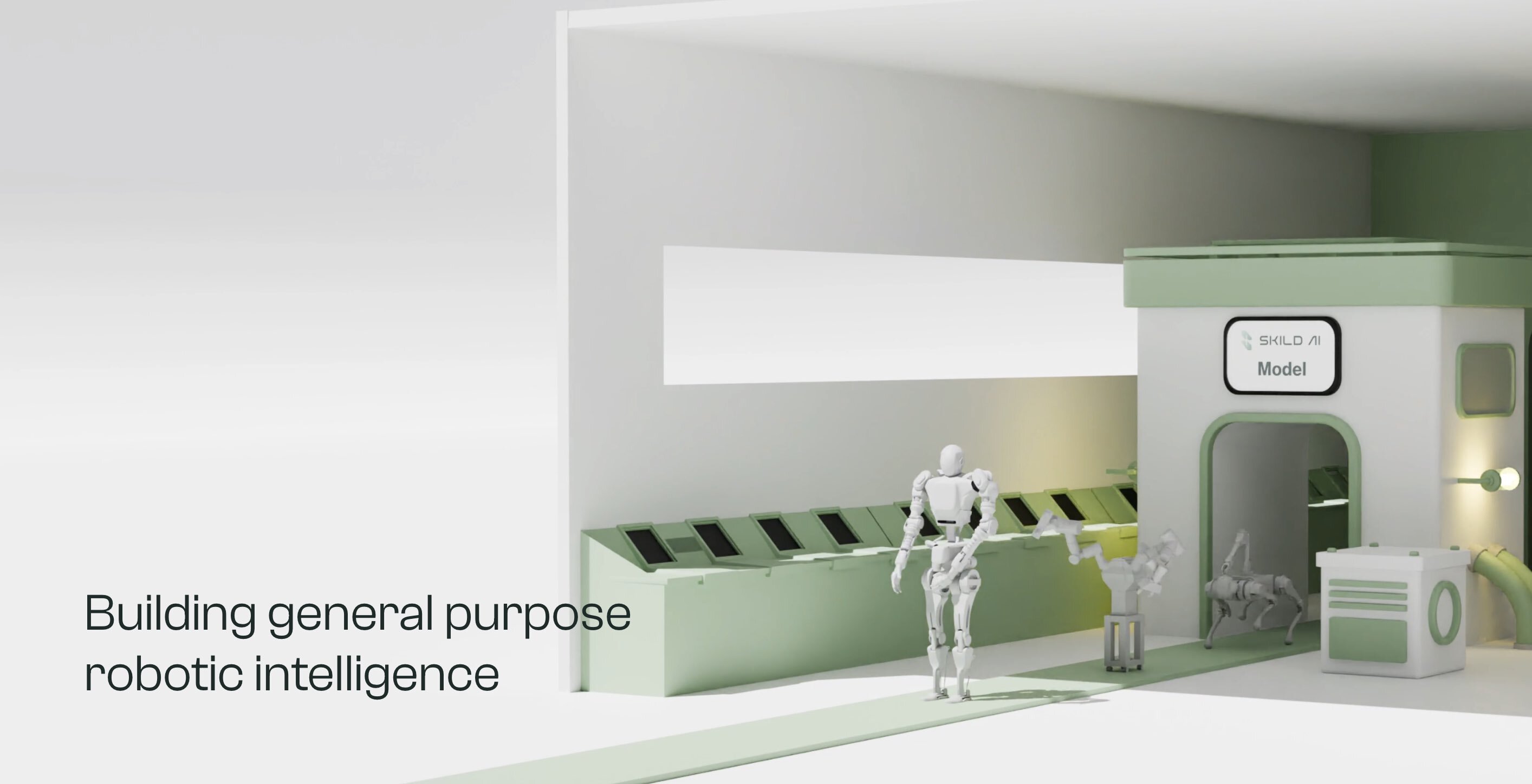
We envision a future where robots possess a general-purpose brain that enables them to operate autonomously and adaptively in dynamic, unstructured environments, much like humans. Our mission is to bridge the gap between AI's digital intelligence and the physical world, empowering machines to perform complex tasks safely and efficiently.
At Skild AI, we are pioneering foundational technologies that integrate continuous learning, advanced perception, and flexible control across diverse robotic platforms. By harnessing large-scale simulation and real-world data, our adaptable AI platform enables robots to overcome traditional boundaries in automation, addressing critical labor shortages and transforming industries such as manufacturing, construction, and logistics.
Driven by a commitment to innovation and collaboration, we are building the future of intelligent robotics—a future where AI and physical autonomy converge to unlock new possibilities for productivity, safety, and human-robot partnership on a global scale.
Our Review
We've been keeping a close eye on Skild AI since they emerged from stealth in 2023, and honestly? This Pittsburgh-based startup has all the ingredients of something special brewing in the robotics world.
What caught our attention first wasn't just their impressive $300 million Series A round—it was the caliber of minds behind it. When you've got former Carnegie Mellon professors who've worked at Tesla, Meta, and Google teaming up to tackle robotics, you pay attention.
The "General-Purpose Brain" Approach
Here's where Skild AI gets interesting. Instead of building robots for specific tasks (the industry norm), they're developing what they call the "Skild Brain"—essentially a universal operating system for robots. Think of it as the difference between having a separate remote for every device versus one universal remote that works with everything.
We love this approach because it tackles Moravec's paradox head-on: what's simple for humans (like picking up an oddly-shaped object) remains incredibly difficult for machines. Their solution? Create an AI that learns and adapts in real-time, just like we do.
Why the Big Names Are Betting Big
When Amazon, NVIDIA, and SoftBank all write checks for the same Series A, you know something's up. What impressed us most is how they've abstracted complex robotic skills into simple API calls. Developers can now focus on building applications without wrestling with the nitty-gritty of robot mechanics.
The $1.5 billion valuation might seem steep for a company that's barely two years old, but consider this: they're addressing massive labor shortages across manufacturing, construction, and logistics. That's not a small market—it's enormous.
Where We See the Real Impact
While everyone's talking about humanoid robots, we're more excited about Skild AI's near-term applications. Security robots that can adapt to different environments, manufacturing bots that don't need reprogramming for new tasks, construction automation that works in unpredictable conditions—these aren't sci-fi dreams, they're practical solutions to real problems.
The company's partnership with HPE and NVIDIA for AI-as-a-service deployment shows they're thinking beyond just selling software—they're building an ecosystem. That's smart business, and it positions them well as the robotics market explodes toward that projected $38 billion by 2035.
Feature
Dynamic Learning: Continuously collects and processes real-world data for adaptability
Pre-trained foundation model using large-scale simulation and internet video data
Post-training on real-world datasets for robustness and generalization
APIs abstracting complex robotic skills for developer use
Supports mobile manipulation, security/inspection robots, and automation of repetitive/dangerous tasks








